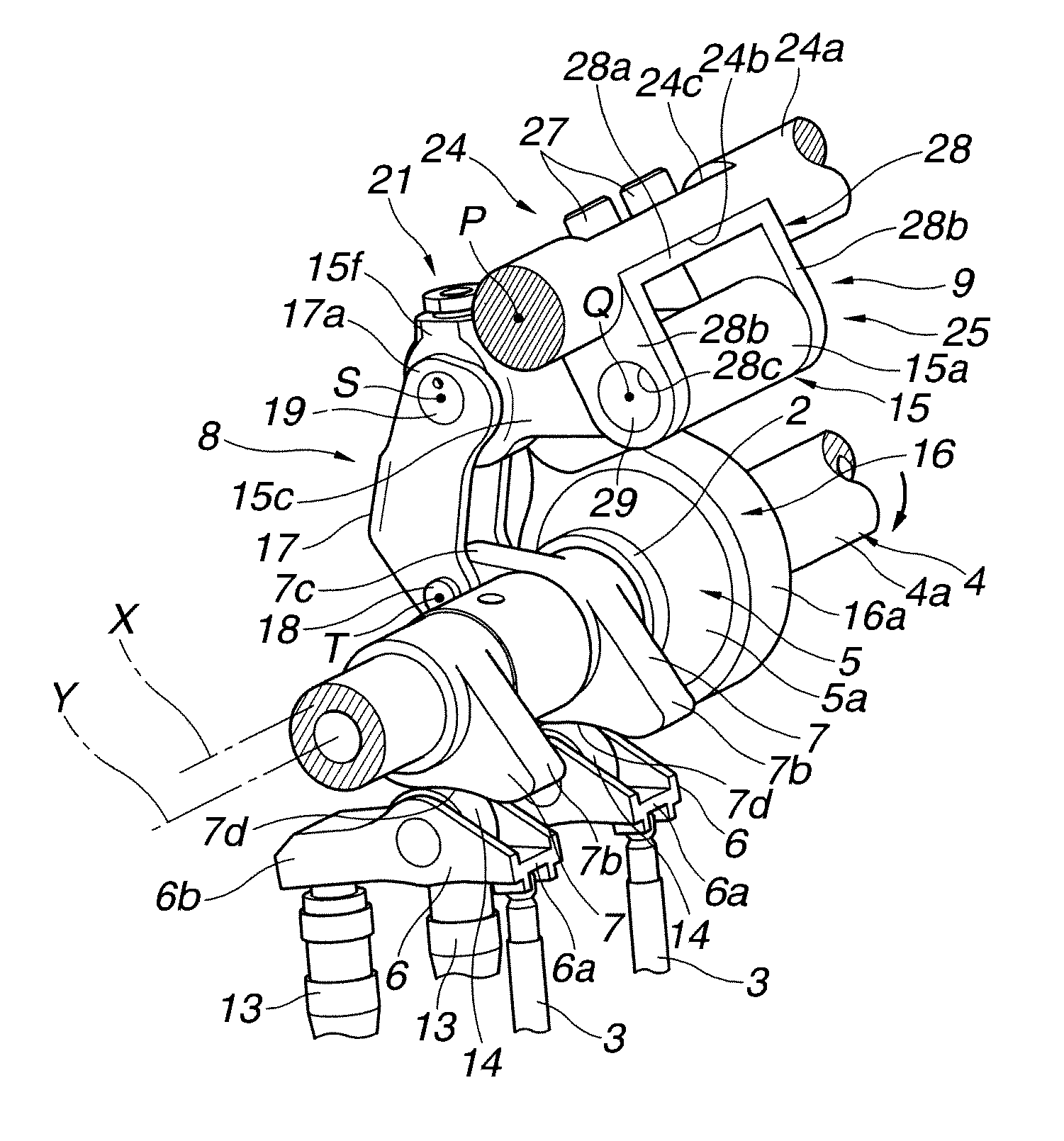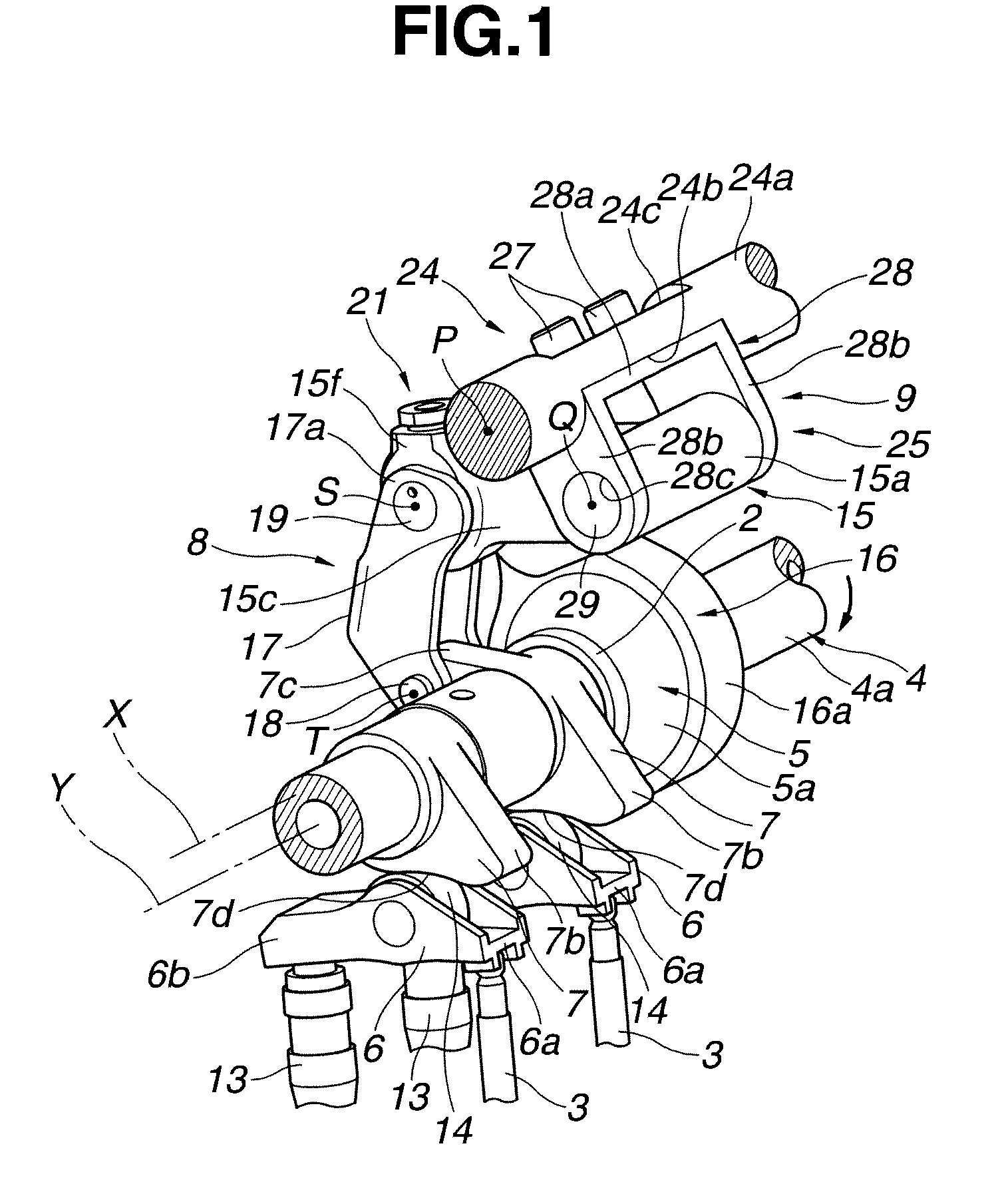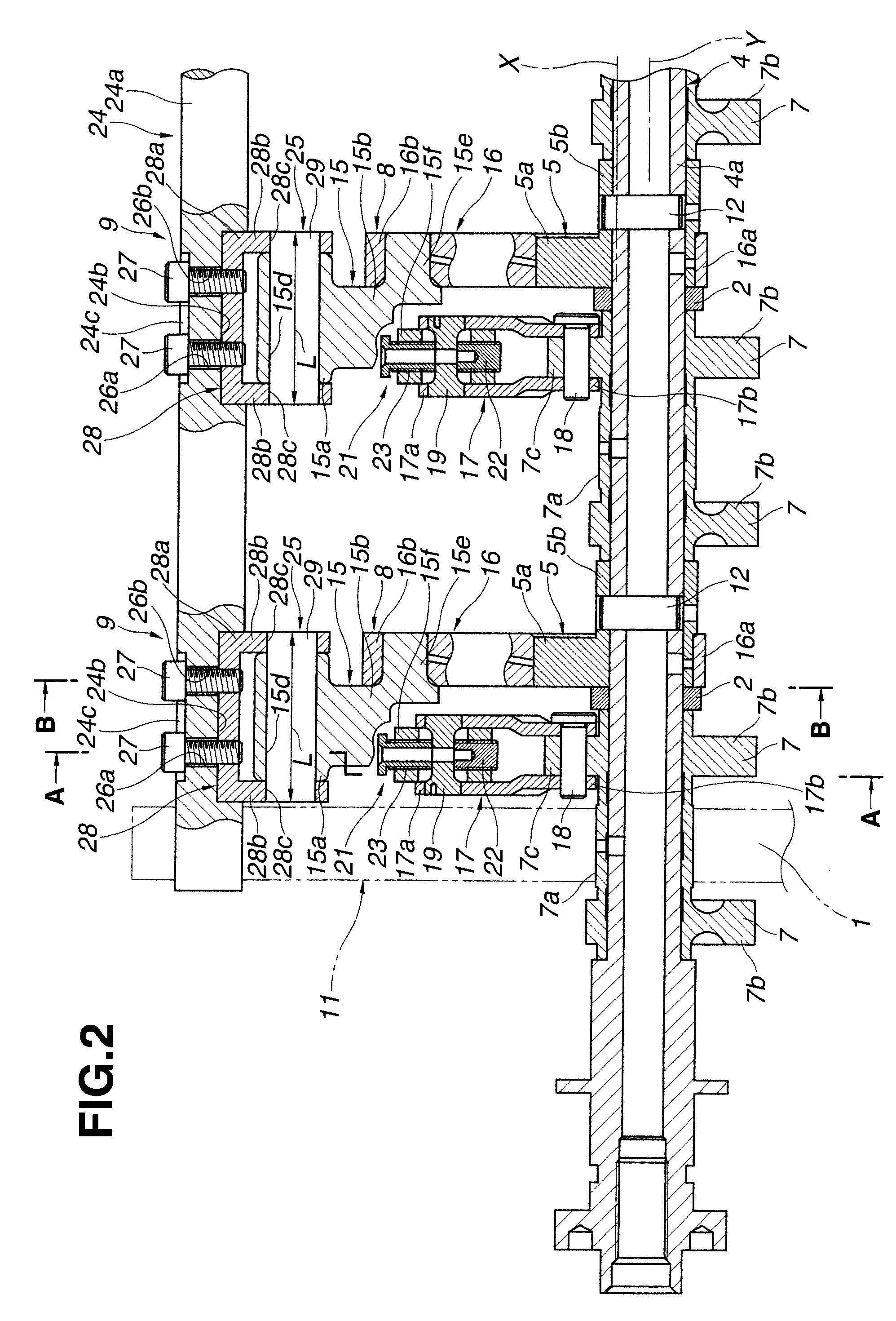Variable valve actuation apparatus of internal combustion engine
a valve actuation and internal combustion engine technology, applied in mechanical equipment, engines, machines/engines, etc., can solve the problems of insufficient engine torque response, undesirable interference between engine valve and piston head, and difficulty in sufficiently improving fuel economy during operation, etc., to achieve the effect of improving control responsiveness
- Summary
- Abstract
- Description
- Claims
- Application Information
AI Technical Summary
Benefits of technology
Problems solved by technology
Method used
Image
Examples
first embodiment
[0029]Referring now to the drawings, particularly to FIGS. 1-2, the variable valve actuation apparatus of the first embodiment is exemplified in an internal combustion engine having four valves for each cylinder, namely, two intake valves and two exhaust valves per one cylinder. In the first embodiment shown in FIGS. 1-2, the variable valve actuation apparatus of the first embodiment is applied to only the intake-valve side.
[0030]As shown in FIGS. 1-2, the variable valve actuation apparatus of the first embodiment is comprised of a cylindrical-hollow drive shaft 4 arranged to extend in a longitudinal direction of the engine, a pair of rockable cams 7, 7 provided for actuating respective intake valves 3, 3 via a pair of swing arms 6, 6, each of which serves as a roller follower resting on the tip of the valve stem of the associated intake valve 3, a motion transmission mechanism 8 (simply, a motion converter), which mechanically links a drive eccentric cam 5, fixedly connected to dri...
second embodiment
[0107]Referring now to FIGS. 12 and 13A-13B, there is shown the detailed structure of the multinodular-link motion mechanism of the variable valve actuation apparatus of the second embodiment. The fundamental structure of the apparatus of the second embodiment of FIGS. 12 and 13A-13B is similar to the first embodiment of FIGS. 1-3, except that, in the second embodiment, the structure of first arm portion 15b of rocker arm 15 is altered. Thus, the same reference signs used to designate elements in the first embodiment shown in FIGS. 1-3 will be applied to the corresponding elements used in the second embodiment shown in FIGS. 12 and 13A-13B, for the purpose of comparison of the first and second embodiments.
[0108]As seen in FIG. 13A, the tip of first arm portion 15b is formed into a two-pronged shape, namely, two parallel pronged portions 15b, 15b. Two bores 15g, 15g are formed in respective pronged portions 15b, 15b, in such a manner as to laterally penetrate the sidewalls of pronged...
third embodiment
[0111]Referring now to FIGS. 14-15, there is shown the detailed structure of the multinodular-link motion mechanism of the variable valve actuation apparatus of the third embodiment. The fundamental structure of the apparatus of the third embodiment of FIGS. 14-15 is similar to the second embodiment of FIGS. 12 and 13A-13B, except that, in the third embodiment, drive eccentric cam 5 is arranged between the rockable-cam pair 7, 7 and additionally multinodular-link motion transmission mechanism 8 has a pair of link rods 17, 17 per cylinder.
[0112]Concretely, as shown in FIG. 14, control support shaft 24a is formed with comparatively long flat recessed portions 24b, 24b, . . . , at its axial positions corresponding to respective rocker arms 15, 15, . . . . For the sake of simplicity, only one flat recessed portion 24b, associated with rocker arm 15 for only one cylinder, is shown. Bracket 28 is secured and fixedly connected onto the bottom flat face of flat recessed portion 24b by screw...
PUM
 Login to View More
Login to View More Abstract
Description
Claims
Application Information
 Login to View More
Login to View More - R&D
- Intellectual Property
- Life Sciences
- Materials
- Tech Scout
- Unparalleled Data Quality
- Higher Quality Content
- 60% Fewer Hallucinations
Browse by: Latest US Patents, China's latest patents, Technical Efficacy Thesaurus, Application Domain, Technology Topic, Popular Technical Reports.
© 2025 PatSnap. All rights reserved.Legal|Privacy policy|Modern Slavery Act Transparency Statement|Sitemap|About US| Contact US: help@patsnap.com



